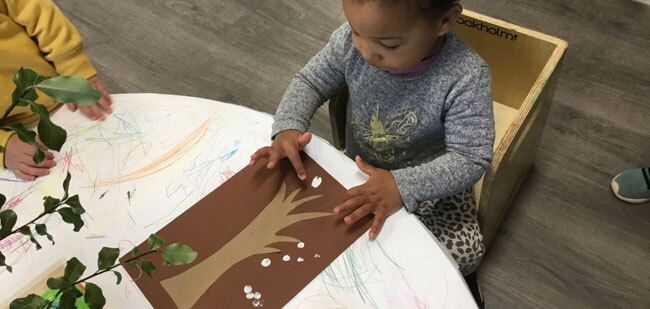*Written by Alyssa Wright – Media and Marketing Manager at Trident Early Learning.*
You may have noticed that the children play with very random materials while at our childcare services. These items are called “loose parts” which is a term to describe open-ended materials. They do not come with a set of directions or an implied “right way to use them”. Some may consider loose parts “junk”, but these items are very beneficial to children’s development.
Loose parts are materials that can be moved, carried, combined, redesigned, lined up, taken apart, and put back together in multiple ways. They can be used alone or combined with other materials.
Some of the benefits of using loose parts in play are:
- They encourage creativity, imagination, and curiosity.
- They are very inexpensive - many items are free.
- Loose parts can be used in many ways and can be adapted and redesigned.
- They provide a connection with the natural environment.
- They can be used by all children regardless of age or development.
- They are portable, flexible, and usually in abundance.
- Children can engage with loose parts alone, with a small group, or within a large group.
- They can stimulate the senses due to the different sizes, weights, smells, textures, shapes and patterns.
- They encourage cooperation and enhance social skills.
- Loose parts allow children to build, dismantle, bang together, repurpose and more, to make their ideas come to life.
- They are proven to develop more skills and competence than most modern plastic toys.
- They are open-ended so every child that engages with them can create a completely different experience for themselves.
There are many different things available that are considered “loose parts”. These materials can be natural, manufactured or recycled.
Some examples of loose parts are:
Recycled/Manufactured
- Tyres
- Pallets
- Ropes
- Cable Reels
- Boxes
- Cardboard Tubes
- Pegs
- Containers
- Scarves
- Ribbons
- PVC Pipes
- Bottle Caps
- Jar Lids
- Milk Crates
- Cotton Reels
Natural
- Pinecones
- Shells
- Rocks
- Stones
- Bark
- Logs
- Wood
- Seedpods
- Pebbles
- Sticks
- Leaves
- Feathers
- Vines
- Flowers
- Gumnuts
As children get older and more comfortable with loose parts, they usually start engaging in risky play. Risk taking teaches children what they are capable of and what they can achieve. We provide many opportunities for children to challenge themselves using loose parts whilst attending our childcare and kindergarten services.
Resources:
Nature Play SA - Loose Parts = Creativity + Discovery + Imagination
Play Australia - Providing Loose Parts to Support Children’s Play
Sources:
Aussie Childcare Network - Loose Parts: A Guide for Educators
Gowrie NSW - Understanding Loose Parts Play
Playground Ideas - Loose Parts Manual
The Wide School - The Theory of Loose Parts


















 info@tridentearlylearning.com.au
info@tridentearlylearning.com.au